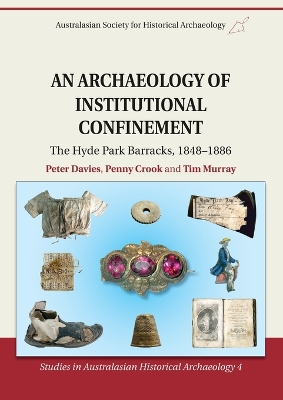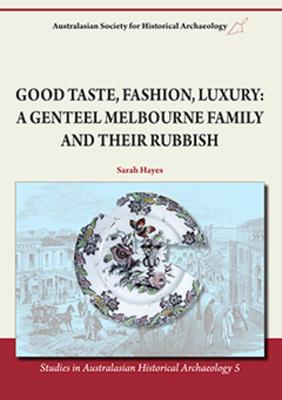Studies in Australasian Historical Archaeology
1 primary work • 3 total works
Book 7
The Commonwealth Block, Melbourne
by Tim Murray, Kristal Buckley, Dr Sarah Hayes, Geoff Hewitt, Justin McCarthy, Professor Richard Mackay, Barbara Minchinton, Charlotte Smith, Jeremy Smith, and Bronwyn Woff
For much of the 19th and 20th centuries, Melbourne's Little Lonsdale Street - locally known as 'Little Lon' - was notorious as a foul slum and brothel district, occupied by the itinerant and the criminal. The stereotype of 'slumdom' defined 'Little Lon' in the minds of Melbournians, and became entrenched in Australian literature and popular culture.
The Commonwealth Block, Melbourne tells a different story. This groundbreaking book reports on almost three decades of excavations conducted on the Commonwealth Block - the area of central Melbourne bordered by Little Lonsdale, Lonsdale, Exhibition and Spring streets. Since the 1980s, archaeologists and historians have pieced together the rich and complex history of this area, revealing a working-class and immigrant community that was much more than just a slum. The Commonwealth Block, Melbourne delves into the complex social, cultural and economic history of this forgotten community.
An Archaeology of Institutional Confinement
by Peter Davies, Penny Crook, and Tim Murray
The archaeological assemblage from the Hyde Park Barracks is one of the largest, most comprehensive and best preserved collections of artefacts from any 19th-century institution in the world. Concealed for up to 160 years in the cavities between floorboards and ceilings, the assemblage is a unique archaeological record of institutional confinement, especially of women.
The underfloor assemblage dates to the period 1848 to 1886, during which a female Immigration Depot and a Government Asylum for Infirm and Destitute Women occupied the second and third floors of the Barracks. Over the years the women discarded and swept beneath the floor thousands of clothing and textile fragments, tobacco pipes, religious items, sewing equipment, paper scraps and numerous other objects, many of which rarely occur in typical archaeological deposits. These items are presented in detail in this book, and provide unique insight into the private lives of young female migrants and elderly destitute women, most of whom will never be known from historical records.
Melbourne grew during the 19th century from its fledgling roots into a global metropolitan centre, and was home to many people from a range of social and cultural backgrounds. The Martin family arrived in Melbourne in 1839 and soon established themselves at the genteel Viewbank estate near Heidelberg.
They were typical of the early, middle-class immigrants to Melbourne who brought their gentility and privilege with them to the colony. The Martins spent many years at Viewbank, and the physical remains they left behind provide a valuable case study for examining class negotiation in the colony through historical archaeology.
In this important study, material culture is used to understand the unique way in which the Martin family used gentility to establish and maintain their class position.


